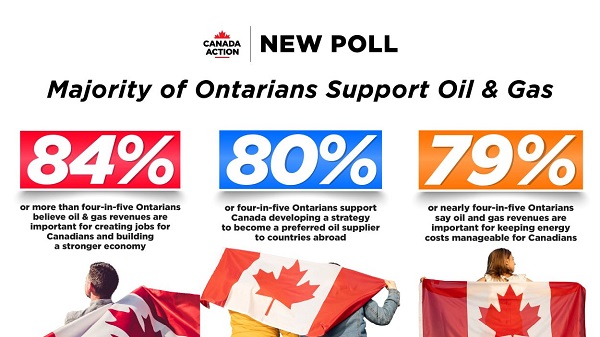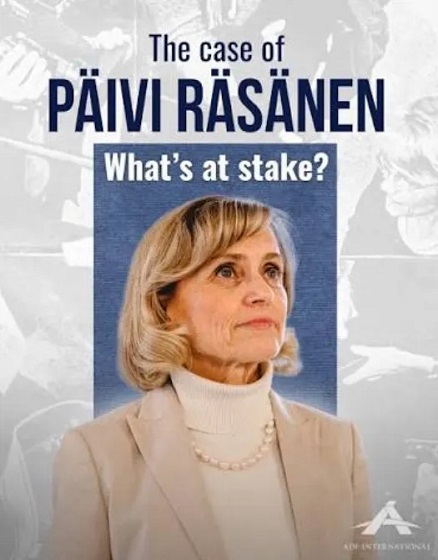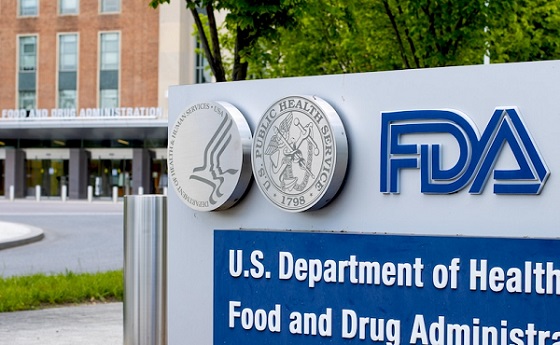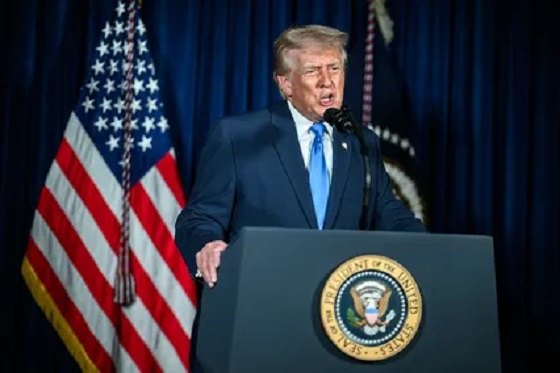Uncategorized
Royal Wedding redux: This time it’s Princess Eugenie

WINDSOR, England — It’s time for another royal wedding at Windsor Castle — but this time it’s less of a global TV spectacle and more of a family affair.
Despite large signs at the castle’s ticket booth welcoming people to the wedding, many visitors seem unaware that Princess Eugenie, granddaughter of Queen Elizabeth II, will marry tequila company executive James Brooksbank Friday.
“No interest,” said Michael Taylor, a drummer from Chicago who toured the imposing castle Wednesday — but didn’t know a wedding was being planned on the grounds. “I don’t know anything about her. If she walked past me right now, I wouldn’t even know.”
Eugenie is the 28-year-old daughter of Prince Andrew and Sarah Ferguson, and ninth in line for the throne. She has lived most of her life outside the media spotlight, and keeps a low profile compared to cousins Prince William and Prince Harry and their glamorous wives.
That’s reflected in the souvenir shops that line the streets leading to the imposing castle. Royal wedding merchandise fill the windows — but they feature Harry and Meghan Markle, who also married at Windsor Castle in May in a spectacular, globally televised ceremony.
Only a few Halloween face masks feature Eugenie, though some shopkeepers say that will change in the hours ahead of her wedding.
“It’s going to be shirts and some mugs. A few people have been asking for it, but compared to Harry-Meghan, it’s not that big,” said Salman Khan at The King and Queen gift shop. Eugenie items have been hard to find because only a few suppliers are manufacturing them, he added.
“This is different, but it’s still quite good for the town. The whole town is still excited. It’s going to be a good day for everybody,” he said.
Snippets of the wedding will be shown on British TV, but only one channel, ITV, is planning to provide live coverage of the proceedings.
Eugenie and Brooksbank are following a precedent set by Harry and Meghan by inviting 1,200 members of the public to the castle grounds for a better view of Friday’s festivities.
Like Harry and Meghan, the couple will also say their vows in St. George’s Chapel, a masterpiece of the “perpendicular Gothic” style with royal connections dating back to 1475, when construction began under King Edward IV.
Afterward, the newlyweds plan a carriage ride through the streets of Windsor to give the public a chance to see them up close.
It’s not clear how many visitors will come to Windsor, a riverside town about 20 miles (32
George, 5, will be a page boy in the bridal party, and three-year-old Charlotte will be one of six bridesmaids. It is not clear if their youngest brother, five-month-old Prince Louis, will attend.
Harry and Meghan, a former star of the TV show “Suits”, are also expected.
Eugenie is following tradition by not revealing who designed her wedding gown, but she has said it will be a British designer. She has asked her older sister, Princess Beatrice, to be her maid of
Eugenie has worked for several years in a fulltime position with the Hauser and Wirth art gallery in London.
Brooksbank, 32, has asked his brother Thomas to be his best man. He and Eugenie have dated for many years. The couple says he got down on one knee and proposed in January during a trip to Nicaragua while the couple was visiting a spectacular lake next to a volcano.
The queen, who has only just returned from an extended summer holiday in Scotland, plans to host a champagne luncheon for the newlyweds shortly after the ceremony, and a second reception will be held that night.
The luncheon with the queen is expected to be a quiet, muted affair — reflecting the 92-year-old monarch’s advanced years — with the nighttime shindig seen as a chance for the younger generations to step out in style.
The presence of so many royals — and a number of celebrity guests — has prompted extra security measures to be put in place.
Police teams have been meticulously checking and sealing water drains near the castle, and sniffer dogs are checking for explosives in the royal-themed shops, restaurants and tea rooms frequented by tourists.
The royal family is paying for the wedding, but the anti-monarchist group Republic is lobbying Parliament to prevent any public money from being spent on security or other wedding-related costs.
The group says Eugenie does not carry out royal duties and that weddings are personal, private occasions, not affairs of state. It has criticized the royals for using weddings as “PR exercises” and expecting taxpayers to pick up part of the tab.
These concerns aren’t popular in Windsor’s business community, where the surging popularity of the royal family in recent years — and the afterglow of Harry and Meghan’s wedding — has helped bring in visitors in recent months.
“We are getting a lot of American and Chinese and Spanish visitors,” said Jag Khaira at the Nell Gwynn Tearoom. “A lot of tourists don’t even know about this wedding Friday, but it will bring in the crowds and should be a good day for us.”
Gregory Katz, The Associated Press
Uncategorized
Mortgaging Canada’s energy future — the hidden costs of the Carney-Smith pipeline deal


Much of the commentary on the Carney-Smith pipeline Memorandum of Understanding (MOU) has focused on the question of whether or not the proposed pipeline will ever get built.
That’s an important topic, and one that deserves to be examined — whether, as John Robson, of the indispensable Climate Discussion Nexus, predicted, “opposition from the government of British Columbia and aboriginal groups, and the skittishness of the oil industry about investing in a major project in Canada, will kill [the pipeline] dead.”
But I’m going to ask a different question: Would it even be worth building this pipeline on the terms Ottawa is forcing on Alberta? If you squint, the MOU might look like a victory on paper. Ottawa suspends the oil and gas emissions cap, proposes an exemption from the West Coast tanker ban, and lays the groundwork for the construction of one (though only one) million barrels per day pipeline to tidewater.
But in return, Alberta must agree to jack its industrial carbon tax up from $95 to $130 per tonne at a minimum, while committing to tens of billions in carbon capture, utilization, and storage (CCUS) spending, including the $16.5 billion Pathways Alliance megaproject.
Here’s the part none of the project’s boosters seem to want to mention: those concessions will make the production of Canadian hydrocarbon energy significantly more expensive.
As economist Jack Mintz has explained, the industrial carbon tax hike alone adds more than $5 USD per barrel of Canadian crude to marginal production costs — the costs that matter when companies decide whether to invest in new production. Layer on the CCUS requirements and you get another $1.20–$3 per barrel for mining projects and $3.60–$4.80 for steam-assisted operations.
While roughly 62% of the capital cost of carbon capture is to be covered by taxpayers — another problem with the agreement, I might add — the remainder is covered by the industry, and thus, eventually, consumers.
Total damage: somewhere between $6.40 and $10 US per barrel. Perhaps more.
“Ultimately,” the Fraser Institute explains, “this will widen the competitiveness gap between Alberta and many other jurisdictions, such as the United States,” that don’t hamstring their energy producers in this way. Producers in Texas and Oklahoma, not to mention Saudi Arabia, Venezuela, or Russia, aren’t paying a dime in equivalent carbon taxes or mandatory CCUS bills. They’re not so masochistic.
American refiners won’t pay a “low-carbon premium” for Canadian crude. They’ll just buy cheaper oil or ramp up their own production.
In short, a shiny new pipe is worthless if the extra cost makes barrels of our oil so expensive that no one will want them.
And that doesn’t even touch on the problem for the domestic market, where the higher production cost will be passed onto Canadian consumers in the form of higher gas and diesel prices, home heating costs, and an elevated cost of everyday goods, like groceries.
Either way, Canadians lose.
So, concludes Mintz, “The big problem for a new oil pipeline isn’t getting BC or First Nation acceptance. Rather, it’s smothering the industry’s competitiveness by layering on carbon pricing and decarbonization costs that most competing countries don’t charge.” Meanwhile, lurking underneath this whole discussion is the MOU’s ultimate Achilles’ heel: net-zero.
The MOU proudly declares that “Canada and Alberta remain committed to achieving Net-Zero greenhouse gas emissions by 2050.” As Vaclav Smil documented in a recent study of Net-Zero, global fossil-fuel use has risen 55% since the 1997 Kyoto agreement, despite trillions spent on subsidies and regulations. Fossil fuels still supply 82% of the world’s energy.
With these numbers in mind, the idea that Canada can unilaterally decarbonize its largest export industry in 25 years is delusional.
This deal doesn’t secure Canada’s energy future. It mortgages it. We are trading market access for self-inflicted costs that will shrink production, scare off capital, and cut into the profitability of any potential pipeline. Affordable energy, good jobs, and national prosperity shouldn’t require surrendering to net-zero fantasy.If Ottawa were serious about making Canada an energy superpower, it would scrap the anti-resource laws outright, kill the carbon taxes, and let our world-class oil and gas compete on merit. Instead, we’ve been handed a backroom MOU which, for the cost of one pipeline — if that! — guarantees higher costs today and smothers the industry that is the backbone of the Canadian economy.
This MOU isn’t salvation. It’s a prescription for Canadian decline.
Uncategorized
Cost of bureaucracy balloons 80 per cent in 10 years: Public Accounts

The cost of the bureaucracy increased by $6 billion last year, according to newly released numbers in Public Accounts disclosures. The Canadian Taxpayers Federation is calling on Prime Minister Mark Carney to immediately shrink the bureaucracy.
“The Public Accounts show the cost of the federal bureaucracy is out of control,” said Franco Terrazzano, CTF Federal Director. “Tinkering around the edges won’t cut it, Carney needs to take urgent action to shrink the bloated federal bureaucracy.”
The federal bureaucracy cost taxpayers $71.4 billion in 2024-25, according to the Public Accounts. The cost of the federal bureaucracy increased by $6 billion, or more than nine per cent, over the last year.
The federal bureaucracy cost taxpayers $39.6 billion in 2015-16, according to the Public Accounts. That means the cost of the federal bureaucracy increased 80 per cent over the last 10 years. The government added 99,000 extra bureaucrats between 2015-16 and 2024-25.
Half of Canadians say federal services have gotten worse since 2016, despite the massive increase in the federal bureaucracy, according to a Leger poll.
Not only has the size of the bureaucracy increased, the cost of consultants, contractors and outsourcing has increased as well. The government spent $23.1 billion on “professional and special services” last year, according to the Public Accounts. That’s an 11 per cent increase over the previous year. The government’s spending on professional and special services more than doubled since 2015-16.
“Taxpayers should not be paying way more for in-house government bureaucrats and way more for outside help,” Terrazzano said. “Mere promises to find minor savings in the federal bureaucracy won’t fix Canada’s finances.
“Taxpayers need Carney to take urgent action and significantly cut the number of bureaucrats now.”
Table: Cost of bureaucracy and professional and special services, Public Accounts
| Year | Bureaucracy | Professional and special services |
|
$71,369,677,000 |
$23,145,218,000 |
|
|
$65,326,643,000 |
$20,771,477,000 |
|
|
$56,467,851,000 |
$18,591,373,000 |
|
|
$60,676,243,000 |
$17,511,078,000 |
|
|
$52,984,272,000 |
$14,720,455,000 |
|
|
$46,349,166,000 |
$13,334,341,000 |
|
|
$46,131,628,000 |
$12,940,395,000 |
|
|
$45,262,821,000 |
$12,950,619,000 |
|
|
$38,909,594,000 |
$11,910,257,000 |
|
|
$39,616,656,000 |
$11,082,974,000 |
-

 Censorship Industrial Complex13 hours ago
Censorship Industrial Complex13 hours agoUS Under Secretary of State Slams UK and EU Over Online Speech Regulation, Announces Release of Files on Past Censorship Efforts
-

 Alberta2 days ago
Alberta2 days agoAlberta project would be “the biggest carbon capture and storage project in the world”
-

 Energy2 days ago
Energy2 days agoNew Poll Shows Ontarians See Oil & Gas as Key to Jobs, Economy, and Trade
-

 Business15 hours ago
Business15 hours ago“Magnitude cannot be overstated”: Minnesota aid scam may reach $9 billion
-

 Business1 day ago
Business1 day agoSocialism vs. Capitalism
-

 Energy1 day ago
Energy1 day agoCanada’s debate on energy levelled up in 2025
-

 Daily Caller1 day ago
Daily Caller1 day agoIs Ukraine Peace Deal Doomed Before Zelenskyy And Trump Even Meet At Mar-A-Lago?
-

 Energy2 days ago
Energy2 days agoWhile Western Nations Cling to Energy Transition, Pragmatic Nations Produce Energy and Wealth









